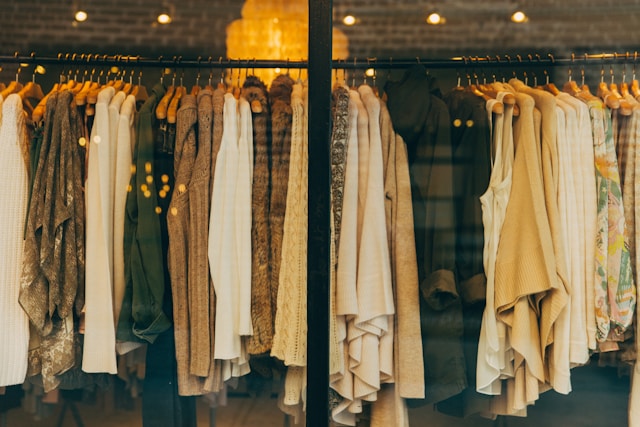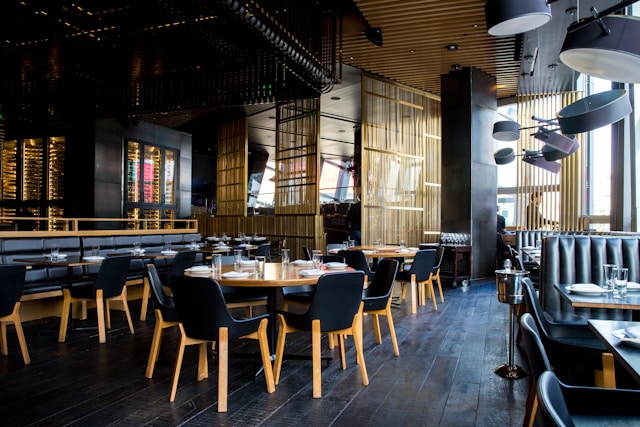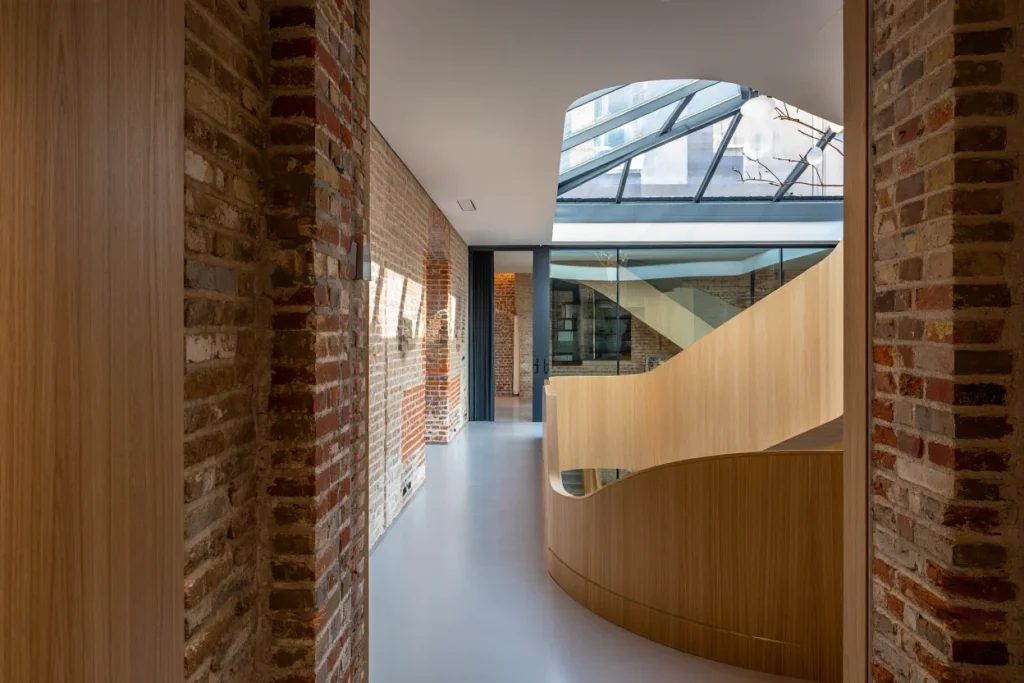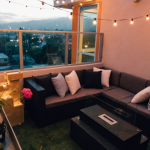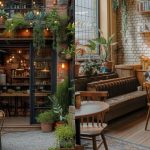In the competitive world of retail, a boutique store’s design is paramount to attracting customers and fostering loyalty. It’s more than just displaying merchandise; it’s about creating an immersive and memorable experience that resonates with your target audience and sets you apart from larger retailers. A well-designed boutique draws customers in, encourages exploration, and ultimately drives sales. This guide will walk you through the essential elements of designing a boutique store that captivates shoppers and keeps them coming back.
1. Defining Your Brand Identity and Target Audience: The Foundation of Your Design
Before you even think about layout or décor, you must have a crystal-clear understanding of your brand identity and who you’re trying to attract.
- Brand Story: What is the unique story behind your boutique? What are your values, your aesthetic, and what makes your offerings special? Your design should visually communicate this narrative.
- Target Customer: Who are you trying to reach? Understand their demographics, lifestyle, preferences, and aspirations. A boutique catering to luxury shoppers will have a vastly different design than one targeting young, trend-conscious individuals.
- Product Focus: What type of merchandise do you primarily sell? High-end fashion, artisanal goods, unique home décor? The design should complement and highlight your products.
2. Creating an Enticing Exterior: The First Impression
Your storefront is the first visual interaction potential customers have with your brand. It needs to be compelling enough to stop them in their tracks.
- Signage: Your sign should be clear, stylish, and reflective of your brand. Consider the font, materials, and lighting.
- Window Displays: These are your visual ambassadors. Create captivating and frequently updated displays that tell a story, showcase key merchandise, and entice passersby to step inside.
- Façade: The overall look of your storefront, including paint color, architectural details, and any exterior lighting, should align with your brand’s aesthetic.
- Entrance: Ensure your entrance is welcoming, accessible, and clearly visible. Consider the size and style of the door and any entryway details.
3. The Layout: Guiding the Customer Journey
The layout of your store should encourage exploration, highlight key merchandise, and create a comfortable flow.
- Decompression Zone: The area immediately inside the entrance. This space should allow customers to adjust to the store’s environment and orient themselves. It’s a good place for subtle branding or visually appealing displays.
- Focal Points: Strategically placed displays or vignettes that showcase key products or new arrivals and draw the eye through the store.
- Navigation: Ensure clear pathways and intuitive flow. Customers should be able to easily navigate the store without feeling lost or overwhelmed.
- Zoning: Consider creating distinct zones for different product categories or experiences (e.g., a dedicated area for new arrivals, a comfortable seating area for trying on shoes).
- Checkout Area: Position the checkout counter in a convenient location, ensuring it’s not cramped or disruptive to the browsing experience.
4. Visual Merchandising: Telling Stories with Products
How you display your merchandise is crucial to attracting attention and driving sales.
- Storytelling: Group products together to create visually appealing narratives or suggest complete looks.
- Color Coordination: Arrange merchandise by color to create a visually harmonious and organized display.
- Layering and Height: Use varying heights and layering techniques to add visual interest and prevent displays from looking flat.
- Signage and Information: Use clear and concise signage to highlight product features, pricing, and promotions.
- Mannequins and Forms: Utilize mannequins and forms to showcase clothing and accessories and help customers visualize how items might look on them.
5. Lighting: Setting the Mood and Highlighting Products
Lighting is a powerful tool for creating ambiance and drawing attention to your merchandise.
- Ambient Lighting: Provides overall illumination for the store. Opt for a level of brightness that suits your brand and product.
- Accent Lighting: Used to highlight specific displays, products, or architectural features. Track lighting, spotlights, and recessed lighting are common choices.
- Task Lighting: Necessary in areas like fitting rooms and at the checkout counter.
- Color Temperature: Consider the color temperature of your lighting. Warmer tones can create a cozy atmosphere, while cooler tones can feel more modern and crisp.
6. Materials and Textures: Adding Depth and Character
The materials and textures you choose for your flooring, walls, fixtures, and furniture contribute significantly to the overall feel of your boutique.
- Brand Alignment: Select materials that align with your brand’s aesthetic (e.g., natural wood for a rustic brand, sleek metal and glass for a modern brand).
- Tactile Experience: Consider how different textures feel and how they contribute to the overall sensory experience.
- Durability and Maintenance: Choose materials that are durable and easy to clean, especially in high-traffic areas.
7. Color Palette: Evoking Emotion and Reinforcing Brand
Your color palette should be consistent with your brand identity and evoke the desired emotions in your customers.
- Brand Colors: Incorporate your brand’s primary and secondary colors strategically throughout the store.
- Mood and Atmosphere: Consider how different colors can influence mood (e.g., calming blues, energizing yellows, sophisticated blacks).
- Product Focus: Choose colors that will complement and enhance your merchandise.
8. Sound and Scent: Enhancing the Sensory Experience
Don’t underestimate the power of subtle sensory details.
- Music: Choose music that aligns with your brand and target audience. The volume should be appropriate for browsing and conversation.
- Scent: A subtle and pleasant scent can create a memorable and inviting atmosphere. Consider using diffusers with essential oils that complement your brand (be mindful of allergies and sensitivities).
9. Creating Comfortable Fitting Rooms: A Key to Sales
Fitting rooms are crucial for apparel boutiques. Make them a positive and comfortable experience.
- Spaciousness: Ensure fitting rooms are adequately sized and well-lit.
- Good Lighting: Use flattering lighting that accurately reflects the color and fit of garments.
- Mirrors: Provide full-length mirrors and consider offering multi-angle mirrors.
- Seating: Include a small bench or chair for customers to sit while trying on clothes.
- Hooks and Shelves: Offer ample hooks and shelves for clothing and personal belongings.
- Privacy: Ensure adequate privacy with secure doors or curtains.
10. The Checkout Experience: The Final Touchpoint
The checkout process should be efficient and pleasant, leaving a positive final impression.
- Clear Signage: Make the checkout area easily identifiable.
- Organization: Keep the checkout area tidy and free of clutter.
- Impulse Buys: Strategically place small, attractive impulse items near the checkout.
- Friendly Service: Ensure staff are efficient, friendly, and engaging.
- Branded Packaging: Use attractive and branded packaging for purchases.
11. Accessibility: Ensuring Everyone Feels Welcome
Design your boutique to be accessible to all customers, including those with disabilities.
- Ramps and Wide Doorways: Ensure easy access for wheelchairs and mobility aids.
- Clear Pathways: Maintain unobstructed pathways throughout the store.
- Lowered Counters: Consider a section of the checkout counter at a lower height.
- Inclusive Signage: Use clear and easy-to-read signage.
12. Storytelling Through Décor: Adding Personality and Context
Incorporate décor elements that tell a story about your brand, your products, or your values.
- Vintage Finds: Unique vintage pieces can add character and charm.
- Local Art: Showcase work from local artists to connect with the community.
- Thematic Displays: Create displays that highlight the inspiration behind your collections or products.
13. The Importance of Flexibility: Adapting to Change
Retail is dynamic. Design your store with some flexibility in mind.
- Movable Fixtures: Utilize fixtures that can be easily rearranged to accommodate new merchandise or seasonal displays.
- Adjustable Shelving: Opt for shelving systems that can be adapted to different product sizes.
14. Creating a Sense of Discovery: Encouraging Exploration
Design your store to encourage customers to explore and discover new items.
- Varying Layouts: Avoid a monotonous grid layout. Create visual interest with different configurations.
- Hidden Gems: Tuck away smaller displays or unique items in unexpected corners to reward exploration.
15. The Power of Seating: Encouraging Lingering
Strategic placement of seating can encourage customers to linger and feel more comfortable.
- Waiting Areas: Provide comfortable seating near fitting rooms or in designated waiting areas.
- Display Seating: Incorporate seating into displays to encourage interaction with products (e.g., a bench near a shoe display).
By thoughtfully considering these elements, you can design a boutique store that not only showcases your merchandise beautifully but also creates an irresistible and memorable shopping experience that attracts customers and fosters lasting loyalty. Remember that the key is to create a cohesive and authentic environment that truly reflects your brand and resonates with your target audience.
16. Integrating Technology Thoughtfully: Enhancing the Experience, Not Replacing It
While the tactile experience is crucial in a boutique, thoughtful technology integration can enhance the customer journey.
- Digital Lookbooks: Interactive displays showcasing product styling ideas or behind-the-scenes content.
- Virtual Try-On (Select Items): For certain products like accessories or cosmetics, virtual try-on experiences can be engaging.
- Mobile POS Systems: Allowing staff to check out customers anywhere in the store can improve flow and personalize service.
- Subtle Information Screens: Discreetly placed screens providing product details, sizing guides, or brand stories.
17. Building Community Within Your Space:
Consider design elements that foster a sense of community and connection with your customers.
- Event Space (Flexible): Designate an area that can be easily transformed for small events, workshops, or meet-and-greets.
- Local Partnerships Display: Showcase collaborations with local artists or businesses.
- Customer Photo Wall (Optional): A curated display of customers engaging with your products or brand.
18. The Power of Storytelling Through Sensory Details:
Extend your brand narrative beyond visuals to engage other senses.
- Curated Playlists: Music that reflects the brand’s mood and target audience.
- Signature Scent: A subtle, unique aroma that becomes associated with your boutique.
- Tactile Displays: Encourage interaction with certain products through touch-friendly displays.
19. Creating “Instagrammable” Moments:
Design specific areas or vignettes that are visually striking and encourage social media sharing.
- Statement Walls: Unique backdrops with interesting textures, colors, or artwork.
- Interactive Installations: Small, engaging displays that invite photos.
- Themed Corners: Eye-catching corners that tell a story or showcase a specific collection.
20. The Importance of Staff Interaction and Space Design:
The way your staff interacts with customers is crucial. Design the space to facilitate positive interactions.
- Open Sightlines: Ensure staff can easily see and approach customers.
- Comfortable Staff Zones: Well-designed staff areas contribute to better morale and service.
- Flexible Consultation Areas: Small, comfortable spaces where staff can offer personalized advice.
21. Showcasing Exclusivity or Uniqueness:
If your boutique offers exclusive or hard-to-find items, the design should highlight this.
- “Vault” or “Curated Collection” Areas: Dedicated spaces with special lighting and display for premium items.
- Storytelling Around Sourcing: Visuals or information about the origin and craftsmanship of unique products.
22. Accessibility Beyond Physical Needs:
Consider accessibility in a broader sense, ensuring your boutique is welcoming to diverse customer types.
- Clear Communication: Easy-to-understand signage and pricing.
- Multilingual Support (If Applicable): Consider signage or staff who can assist non-English speakers.
- Sensory Considerations: Be mindful of overwhelming sounds or scents for customers with sensory sensitivities.
23. The Element of Surprise and Delight (Subtle):
Small, unexpected touches can create a positive and memorable experience.
- Complimentary Services: Offering small perks like gift wrapping or a personalized note.
- Unique Packaging: Branded packaging that feels special.
- Loyalty Program Recognition: Subtle visual cues that acknowledge returning customers.
24. Adapting to the Digital Age (Bridging Online and Offline):
Consider how your physical boutique interacts with your online presence.
- QR Codes: Linking in-store displays to online product information or styling tips.
- Social Media Integration: Encouraging in-store photo sharing and engagement.
- Click-and-Collect Zones: A designated area for online order pickups.
25. The Ongoing Evolution of Your Space:
Your boutique’s design shouldn’t be static. Be open to refreshing and evolving the space based on customer feedback, sales data, and emerging trends to keep the experience exciting and relevant. Regular updates, even small ones, can make a big difference in maintaining customer interest.
Conclusion
designing a boutique store that truly attracts and retains customers is a delicate yet powerful blend of art and strategy. It’s about creating more than just a place to shop; it’s about crafting an immersive and emotionally resonant experience that aligns perfectly with your brand identity and speaks directly to your target audience. By thoughtfully considering every element, from the initial allure of your storefront to the intimate details of your fitting rooms and the final touch of the checkout process, you can cultivate an environment that captivates the senses, tells a compelling story, and fosters a genuine connection with your clientele.
Furthermore, embracing visual merchandising as a form of storytelling, leveraging the power of lighting and sensory details, and prioritizing customer comfort and accessibility are paramount. In today’s dynamic retail landscape, the ability to create “Instagrammable” moments and seamlessly integrate the physical and digital worlds can further amplify your reach and engagement. Ultimately, a well-designed boutique is a dynamic and evolving space that continuously seeks to surprise, delight, and authentically connect with its customers, transforming a simple transaction into a memorable and cherished brand experience.
